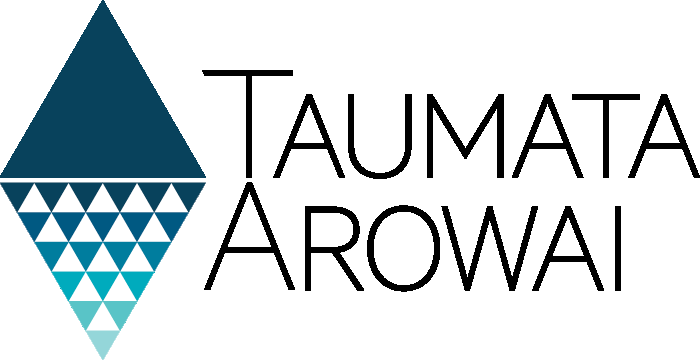

OIA Ref: CAS-01877-F2Q7P8
7 November 2024
Mr Davies
[FYI request #28371 email]
Tēnā koe Mr Davies
Request for further information on azinphos-methyl
Thank you for your email dated 10 October 2024, requesting the fol owing information to be
provided under the Official Information Act 1982 (OIA):
Thank you for your response and for providing the background information regarding the increased
Maximum Acceptable Value (MAV) for azinphos-methyl. I have some additional questions regarding
this increase, especially in light of comparisons with international standards.
1. Toxicological Basis for MAV Increase
Could you please provide details on the toxicological data or studies used to determine the new MAV
of 0.1 mg/L? Given this substantial increase, are there findings that support the safety of this level for
long-term human consumption?
2. International Comparisons
I’ve noted that New Zealand’s MAV of 0.1 mg/L is significantly higher than those of other countries,
such as Canada (0.02 mg/L) and Australia (0.03 mg/L). Specifically, New Zealand’s allowable level is 5
times higher than Canada’s and 3.3 times higher than Australia’s. This equates to New Zealand’s
level being 400% higher than Canada’s and 233% higher than Australia’s. Could you explain why such
a high MAV was chosen, especially given the international context?
3. Reasons for Moving Away from Precautionary Limits
Could you provide clarification on why the provisional MAV of 0.004 mg/L was raised by such a large
margin, particularly for a substance banned due to health concerns? Was the previous limit deemed
overly restrictive based on new evidence?
4. Public Health Risk Assessment
Has a recent assessment been conducted on the health impacts of this increased MAV? If available, a
summary of findings regarding the long-term safety implications of this concentration would be
helpful?”
Our response to your request is set out below.
1
 Response
Response
Basis for MAV increase
1. The Water Services Authority - Taumata Arowai (the Authority) considers evidence from a range
of sources when determining a MAV. When drafting the Drinking Water Standards in 2021/22,
we commissioned a report from the Institute of Environmental Science and Research Limited
(ESR) on the proposed MAVs, titled
2022 MAV Review ESR Proposed Standards (provided to you
as Appendix One for the OIA response we sent to you on 10 October 2024
).
2. Most of the MAVs in the Drinking Water Standards 2022 are aligned with guidelines for drinking
water quality published by the World Health Organisation (WHO). However, the WHO guidelines
do not include a value for azinphos-methyl. The toxicological basis for the MAV increase for
azinphos-methyl was based on the advice from ESR in the
2022 MAV Review ESR Proposed
Standards report.
International comparisons
3. Th
e Australian Drinking Water Guidelines have set an azinphos-methyl MAV of 0.03mg/L. The
guidelines state that azinphos-methyl levels are unlikely to reach this MAV in drinking water. The
guidelines also advise that:
a) no data was available on occurrence of azinphos-methyl in Australian waters;
b) estimated concentration of azinphos-methyl in surface water in USA was 0.016mg/L in the
USA (USEPA 2006); and
c) azinphos-methyl was not found in a survey of Canadian drinking water (Health Canada
1989).
4. There is no maximum contaminant level for azinphos-methyl in the National Primary Drinking
Water Regulations set by the Environmental Protection Agency in the United States.
5. There is no maximum acceptable concentration (MAC) for azinphos-methyl in the Guidelines for
Canadian Drinking Water Quality (GCDWQ). The GCDWQ state that the previous MAC of
0.02mg/L was withdrawn in 2022, and that “guidelines are withdrawn for parameters that are
no longer found in Canadian drinking water supplies at levels that could pose a risk to human
health. This includes pesticides that are no longer registered for use in Canada”.
6. The critical factor which we considered in setting this MAV was the advice we received from ESR
within the
2022 MAV Review ESR Proposed Standards report.
Use of precautionary limits
7. Precautionary MAV (PMAV) was a term used by the Ministry of Health in previous drinking water
standards. The
Drinking Water Standards for New Zealand 2005 (R2018) explains that “PMAVs
have been applied to chemical determinands when the Ministry of Health has derived a MAV in
the absence of a WHO guidelines value”. While this terminology is not used in the current
Standards, MAVs are precautionary and designed to protect people over the course of their
lifetime.
Public health implications
8. No recent assessments have been conducted on the health impacts of this increased MAV by
any organisation domestical y or international y. This part of your request is therefore refused
under section 18(e) of the Official Information Act (OIA), as the information does not exist.
9. When the Authority next reviews the Drinking Water Standards 2022, we wil consider whether
the current MAV for azinphos-methyl should be amended. There is no planned review at this
stage; however, it is likely a review will be considered in late 2025 or 2026.
2

 For further information
For further information
10. Other resources related to your request are available to you here:
a) Drinking Standards set in 2019 and 2022:
i.
dwsnz-2005-revised-mar2019 (1).docx; and
ii.
2022 Drinking Water Standards for NZ Regs.pdf.
b) Guidelines for Canadian Drinking Water Qualit
y Guidelines for Canadian Drinking Water
Quality - Summary Tables - Canada.ca
c) National Primary Drinking Water Regulations for the United States
National Primary Drinking
Water Regulations | US EPA
d) Articles related to the use of azinphos-methyl in New Zealand:
i.
Hazardous Substances and New Organisms Act 1996 - 2009-au9465- New Zealand
Gazette which confirms that use of azinphos-methyl has been phased out since 2009
and prohibited since 2014.
ii. EPA does sometimes al ow smal amounts of this substance to be used in New Zealand
for research purposes
https://www.epa.govt.nz/assets/FileAPI/hsno-
ar/APP204088/APP204088_Final_Decision.pdf
iii.
Use of toxic insecticide to be phased out | RNZ News
iv.
National survey of pesticides in groundwater 2022 (knowledgeauckland.org.nz) where
azinphos-methyl was tested for and not detected.
v.
ttps://www.epa.govt.nz/assets/FileAPI/hsno-
ar/APP204088/APP204088_Final_Decision.pdf
11. If you have any further questions in relation to the MAV increase for azinphos-methyl, our Chief
Advisor, Water Science Jim Graham is available via
[email address] or 027
2313 445.
Right to complain
You have the right by way of complaint to the Ombudsman under Section 28(3) of the OIA to seek an
investigation and review of this response. Information about how to make a complaint is available at
www.ombudsman.parliament.nz or freephone 0800 802 602.
Ngā mihi
Sara McFall
Head of Systems, Strategy and Performance
3




